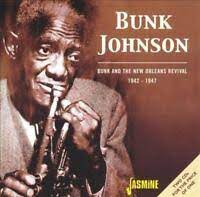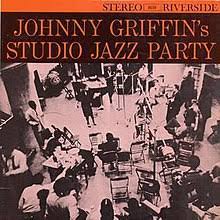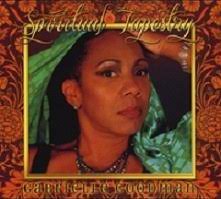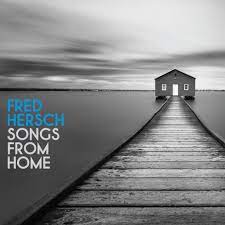
Daily Dose Of Jazz…
Lawrence Henry Marrero was born on October 24, 1900 in New Orleans, Louisiana, on October 24, 1900. He grew up in a musical family with three brothers who became musicians, bassist Eddie, banjoist John and Simon who played tuba and bass, and their bassist father Billy. He was taught music by his father, and by 1918 he became a professional player.
In 1919 he got his first regular job on banjo with Wooden Joe Nicholas’s Camelia Brass Band and from 1920 he joined on bass drum the Young Tuxedo Brass Band. Marrero was one of the musicians who took part in the first recordings made by Bunk Johnson In 1942, and continued playing and recording in the New Orleans jazz revival. He was featured on many recordings and was a regular member of the George Lewis band from the late 1930s until ill health caused him to quit full-time performance in 1954. He occasionally played with his own band after that.
Marrero was considered to be a steady player with a good tone, however, he never recorded as a leader and rarely did he take solos. Banjoist Lawrence Marrero, who altered the spelling of his name to Laurence, transitioned on June 6, 1959.
More Posts: banjo,history,instrumental,jazz,music

Requisites
Johnny Griffin’s Studio Jazz Party ~ Johnny Griffin | Eddie Carter
This title from the library brings renown jazzman Johnny Griffin into the spotlight for his only live album as a leader on Riverside Records. Submitted now for your approval is the 1961 LP, Johnny Griffin’s Studio Jazz Party (RLP-9338), recorded before a live audience that was invited to the recording session inside Plaza Sounds Studios. Joining the saxophonist are Dave Burns on trumpet; Norman Simmons on piano; Victor Sproles on bass and Ben Riley on drums. My copy is The Riverside Original Recording Series Japanese Stereo reissue (SMJ-6145), released in 1976 by Victor Musical Industries, Inc.
The performance is hosted by Babs Gonzales who welcomes the crowd to the session on the opening track, Party Time and introduces the first song, Good Bait by Count Basie and Tadd Dameron. This standard was written in 1944, becoming a feature in Basie’s and Dizzy Gillespie’s Orchestra. Griffin and the trio introduce the song slowly, picking up immensely when the melody moves to a medium-fast tempo. Dave sets the pattern for the song on the opening statement with punchy rhythms, crisp lines, and a crackling tone. Simmons strolls into the next reading for an impressive interpretation which shows no strain as each phrase unfolds. Both horns share a few more statements before the ensemble returns for a march-like closing chorus and amusing ending.
The first side ends on an uptempo note with the 1942 popular song, There Will Never Be Another You, written by Harry Warren and Mack Gordon for the musical film Iceland, which premiered that same year. The first recording outside the film was a 78-rpm single (B-11574) by vocalist Joan Merrill recorded for the RCA subsidiary, Bluebird. The trio opens with an abridged introduction, stepping aside as Burns begins the opening chorus and the lead solo ambitiously with a drive which generates its own excitement. Simmons is dazzling on the next reading with choruses which illustrate a mature sound that swings freely. Griffin romps through the next statement of this cheery bouncer with long, flowing lines that are rewarding in every respect to the delight of one fan who urges him on as his solo progresses. Sproles is up next to give a brief statement with an agility that shows he is much more than a solid foundation and sets up the front line to share a few final thoughts before the ensemble brings the song to a close to the delight of the crowd.
Babs opens the second side with a message to the crowd, then the group tears into Dave Burns’ Toe-Tappin” which possesses great speed from the start and the interaction between the front line during the main theme is marvelous. Dave kicks off the lead solo with a passionate presentation which launches its own fireworks in perfect harmony on each note to the equally incandescent foundation by the rhythm section. Norman sustains the ferocious pace with a knockout performance on the next statement, then Johnny charges ahead with enthusiastic phrases on the tune’s longest interpretation which are constructed marvelously. Victor fuels the final reading with pure adrenalin for an exclamation point that will have your fingers popping and your toes tapping to the contagious beat until the quintet’s soft fade finale and audience’s fervent expression of approval.
The LP’s only standard is a classic from The Great American Songbook which Babs introduces in French. You’ve Changed was written in 1942 by Carl Fischer and Bill Carey and has been covered by many vocalists in the jazz and pop genres. The definitive vocal of this popular song, in my opinion, was sung by Billie Holiday on the 1958 Columbia album, Lady In Satin (CL 1157/CS 8048). After a brief introduction by the trio, Burns plays the first half of the opening chorus with Johnny playing the second half to ng, amiable final presentation that leads back to the closing chorus and a gentle ending as the applause fades to mark the end of this very enjoyable Studio Jazz Party.
The original recording was engineered by Ray Fowler, the man behind some of the greatest jazz albums on Riverside and Jazzland with the mastering done by Jack Matthews of Components Corporation for this Japanese LP. Both men have done their job well because the sound is vivid with each instrument providing a realistic soundstage that surrounds your sweet spot, placing you in the best seat to enjoy the performance along with the crowd. The music which makes up the program is equally enjoyable, and I even found Gonzales’ comments throughout the album colorful and its crystal-clear Babs was in a party mood as the set progressed. In short, Johnny Griffin’s Studio Jazz Party is a pleasurable program of music which still stands up well nearly six decades later and at nearly forty-six minutes, offers a benefit to the novice or knowledgeable listener that he or she will get their money’s worth from a performance they can revisit anytime.
~ Good Bait, There Will Never Be Another You, You’ve Changed – Source: JazzStandards.com, Wikipedia.org © 2020 by Edward Thomas Carter
More Posts: choice,classic,collectible,collector,history,instrumental,jazz,music,saxophone

Daily Dose Of Jazz…
Gabrielle Goodman was born October 23, 1964 in Baltimore, Maryland and her early years of singing in church in Baltimore gave her the skillset to blend jazz and gospel. As a protege of Roberta Flack began her international performance career as a backing vocalist for Flack in the mid-1980s while at the Peabody Institute. She continued to tour and record with her mentor for several years opening for Miles Davis, Ray Charles, the Crusaders and other legends in Japan, Switzerland, Brazil and others around the world.
Goodman’s breakthrough as a solo recording artist happened when she appeared on Norman Connors 1988 album Passion on Capitol Records. She sang lead on five songs, which led to her recording two jazz albums Travelin’ Light in 1993 and Until We Love the following year with Kevin Eubanks, Christian Mcbride, Gary Bartz, Gary Thomas, and Terri Lyne Carrington.
It would be another ten years before she would drop her third album which landed in the soul jazz category ~ Angel Eyes, Songs From The Book and Spiritual Tapestry for the Goodness label. As a touring and performing solo artist she has played festivals and with symphony orchestras.
Goodman has written and arranged songs for Chaka Khan and Roberta Flack, performed alongside Dee Dee Bridgewater and Michael Buble, and also provided vocals for Patti Labelle, Nona Hendryx, Jennifer Hudson, Mary J. Blige, Patrice Rushen, Freddie Jackson, Bryan Ferry, and George Duke.
Vocalist, composer, author, and educator Gabrielle Goodman has a four-octave vocal range and has been an associate professor of voice at Berklee College of Music since 1998.
More Posts: bandleader,educator,history,instrumental,jazz,music,vocal

Daily Dose Of Jazz…
Peck Kelley was born John Dickson Kelley in Houston, Texas on October 22, 1898. During the 1920s, he was a popular bandleader who led his own band, Peck’s Bad Boys. The group included players such as Jack Teagarden, Louis Prima, Terry Shand, Wingy Manone, Leon Roppolo and Pee Wee Russell, several would go on to have successful recording careers of their own. Despite the apparent success of this group, no recordings survive from this period.
Rarely played anywhere outside of Texas, however, early in his career he did perform in Missouri and Louisiana. Throughout his career Kelley repeatedly turned down offers by other musicians of the day to play outside of Texas like Bing Crosby, Jimmy Dorsey, Tommy Dorsey and Paul Whiteman. Joining the Dick Shannon Quartet with Glen Boyd on Bass Fiddle, the only studio recordings from this musician to survive were made in Houston in 1957.
He enjoyed playing at the sessions and subsequently listening to the tapes but he refused to allow them to be released. They were eventually released in 1983 by Commodore Records as the Peck Kelley Jam Sessions, Volumes 1 & 2. Some private recordings of this same period have been released on the Arkadia record label.
Throughout his career he wished to remain anonymous, a private man who did not wish fame for himself. Pianist and bandleader Peck Kelley eventually became blind, developed Parkinson’s disease, and transitioned on December 26, 1980, at 82.
More Posts: bandleader,history,instrumental,jazz,music,piano

Daily Dose Of Jazz…
Fred Hersch was born October 21, 1955 in Cincinnati, Ohio to Jewish parents and began playing the piano at the age of four, composing music by eight. By ten he won national piano competitions.
Hersch first became interested in jazz while at Grinnell College in Iowa. He dropped out of school and started playing jazz in Cincinnati, continuing his studies at the New England Conservatory under Jaki Byard and attracting attention from the press in a college recital. Upon graduation, he became a jazz piano instructor at the college.
1977 saw Fred moving to New York City, then gigged with Art Farmer in Los Angeles, California in 1978. He would play with Farmer again three years later, played for singer Chris Connor, then with Joe Henderson. He would go on to perform with Jane Ira Bloom, Jamie Baum, Toots Thielemans, Eddie Daniels, and Janis Siegel. A fortuitous firing of his pianist by Art Pepper gave Hersch the launch of his career when he filled in for the pianist.
In 1986, he taught at Berklee College of Music, performed and recorded sixty-four albums as a leader or co-leader, seventy-nine as a sideman and wrote an autobiography, Good Things Happen Slowly: A Life In and Out of Jazz.
In 1993, Hersch came out as gay and has been treated for HIV since 1984. He fell into a coma in 2008 for two months but when he regained consciousness, he had lost all muscular function as a result of his long inactivity and could not play the piano. After rehabilitation, he was able to play again. He continues to compose, perform and record.
More Posts: bandleader,composer,educator,history,instrumental,jazz,music,piano



